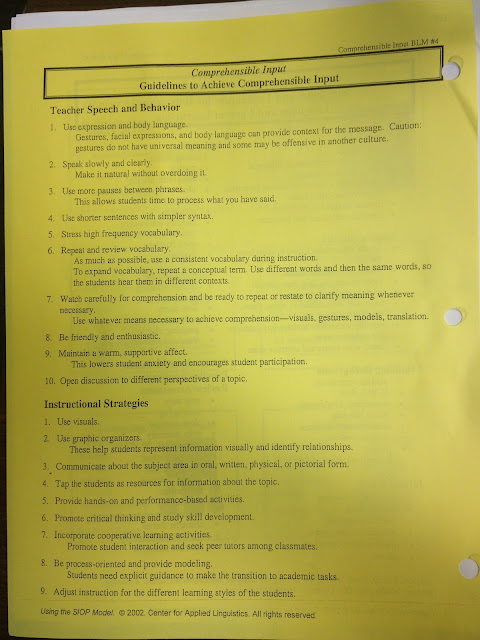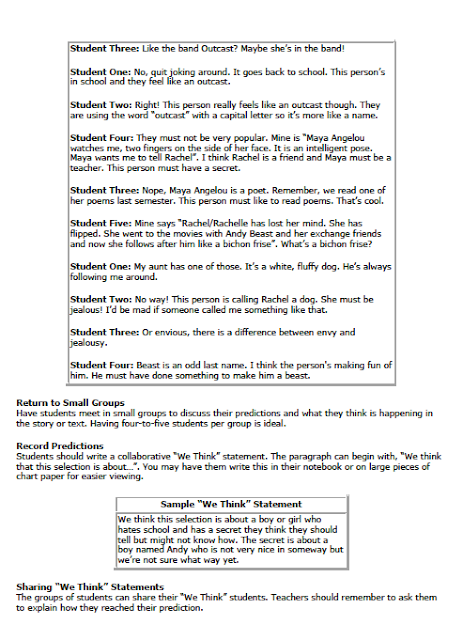Comprehensible Input Features
(From the SIOP text)
- Speech appropriate for students proficiency levee
- Slower rate of speech
- Careful enunciation
- Simple structure for beginners
- Paraphrasing and repetition
- Use cognates
- Pull from their prior knowledge
- Avoid using idioms
- Clear explanation of Academic Tasks
- Step by step directions
- show example of finished product
- oral and written directions
- opportunities to practice what has been explained
- need more guided practice
- A variety of techniques use to make content concepts clear
- Modeling
- Visuals
- have pictures and label pictures
- Hands-on Activities
- Demonstrations
- Gestures
- Body Language
- Graphic Organizers
 |
| Read the lesson scenarios, create a T-Chart list effective and non-effective |
Tea Party Strategy
Can be a good strategy to use with students especially ELL students
Language and Content Objectives
- NCLB requires that we measure progress in both areas
- Academic Achievement (CRTs)
- English Langauge Proficiency (UALPA)
- Content knowledge cannot grow if we only focus on learning the English language
- Language learning cannot occur if we only focus on academic subject matter
4 Reasons to Combine Language and Content
- language forms and vocabulary will develop as students study areas of interest
- Motivation plays a role in learning complex language structures
- Teachers can activate and build on students' prior knowledge in the content area
- Language structure and form should be learning in authentic contexts rather than through contrived drills in language workbooks
Generating Language Objectives
- Four language domains
...to demonstrate the "what" or content that they will learn - Reading
- Writing
- Speaking
- Listening
- key vocabulary
- language functions
- agreeing and disagreeing
- asking for permission, directions, help, questions
- explaining
- expressing likes, dislikes and opinions
- describing and denying
- classifying
- commanding/giving instructions
- identifying
- sequencing, suggesting
- planning and predicting
- enquiring/questioning
- asking for assistance or directions
- wishing and hoping
- refusing
- grammar or language structures
- particular verb tenses
- possessives
- plurals
- adverbs
- vocabulary words
- sequencing words
- first
- second
- meanwhile
- next
- third
- after
- before
- finally
- then
- last
- pre-fixes-suffixes
- lesson tasks
- language learning strategies







Thank you for posting such a great blog. I found your website perfect for my needs. Read About SIOP Feature 12 Use a Variety of Techniques to Make Concepts Clear
ReplyDelete